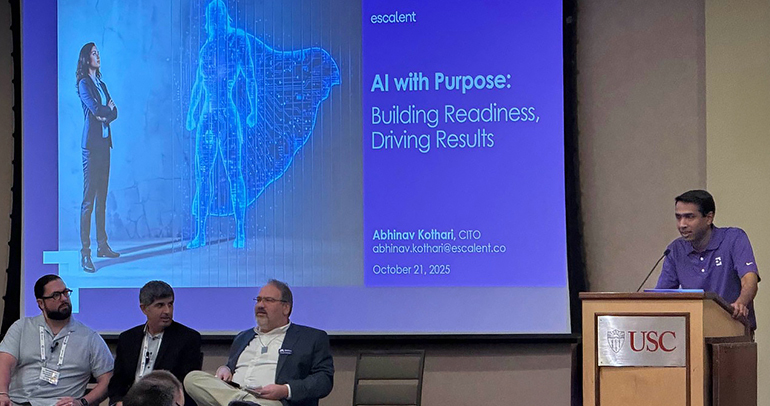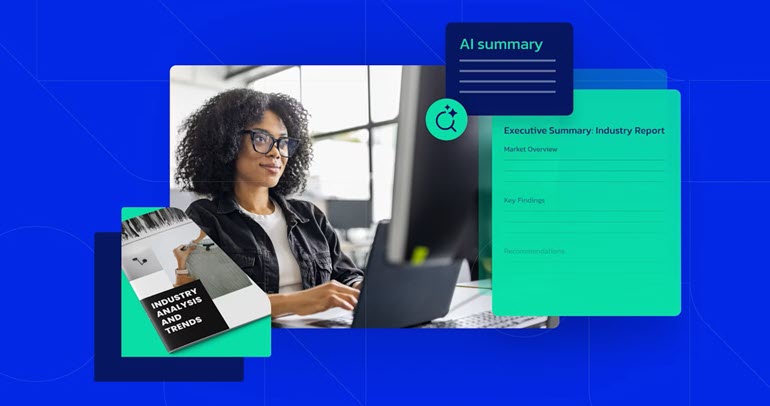
In a world where consumer behaviors shift overnight and businesses pivot weekly, the pace of traditional research just isn’t fast enough. For brands and insight agencies alike, online insight communities have long offered a more agile, always-on approach to staying close to consumers. But now, with the integration of artificial intelligence, these communities are becoming even more powerful—capable of keeping up with the fast-changing demands of both the marketplace and the boardroom.
But while AI brings new speed and scale, it’s humans—engaged participants, thoughtful moderators and expert analysts—who power the insight. Their empathy, curiosity and lived experiences are essential to connecting the dots, making sense of the data and uncovering what matters for stakeholders and the business.
Whether the need is driven by external market forces or internal stakeholder pressure, AI is transforming what’s possible with insight communities, especially when paired with the human expertise that brings insight to life. Read on to explore how this technology is unlocking new levels of speed and responsiveness across both macro and micro research challenges.
Meeting Market Demands Faster with AI-Powered Insights and Online Communities
The world is more volatile than ever. Shifting consumer expectations, fast-moving competitors, cultural movements and global events all demand rapid insight and action. Brands that can’t keep up risk becoming irrelevant. Online insight communities already provide a unique way to stay embedded in consumers’ everyday lives, through deep, ongoing qualitative insight and co-creation. But with AI, the value of these communities multiplies. By combining AI’s ability to analyze patterns at scale with the deep customer understanding held by human researchers, we can deliver highly personalized insights that are both contextually relevant and strategically impactful.
Customer engagement strategies become more agile and optimized to get the right messaging in front of the right people at the right time and at the right cadence. Natural language processing (NLP) tools can quickly identify patterns, detect consumer sentiment and summarize key words and themes across hundreds or thousands of posts, distilling rich qualitative data at speed. Better yet, this texture can be supplemented with AI-driven social listening, bringing breadth to depth by cross-referencing themes at scale. This adds robustness to market research findings, whether by validating patterns or uncovering meaningful tensions—all grounded in what’s unfolding in real-time. What once took days of manual coding and analysis now takes minutes—and this speed is essential when the market moves.
Imagine a new competitor launches a disruptive product, or a viral trend changes what consumers expect from your category. With AI-powered research capabilities, insight teams can instantly surface relevant reactions from their community, analyze the underlying consumer motivations and feed recommendations back to the business, fast enough to influence real decisions. AI also supports proactive strategy. By continuously scanning organic community discussions, brands can spot emerging needs, category tensions or opportunities before they hit the mainstream. It’s a shift from reactive insight to predictive guidance—and one that gives brands a true competitive edge.
First and foremost, however, researchers must engage real, human participants. While synthetic data may provide a helpful gut check in preliminary testing, it is no worthy substitute for diverse, lived experience. This extends to the topic of inclusivity; inherently biased training data can fail to represent minority groups, and worse still, perpetuate existing stereotypes and misconceptions.
Overreliance on AI-powered research can result in flat, uninspiring insights that fail to drive action—in part because AI is no more than a pattern-predictor. If nuance is missing from the input (synthetic data, lazy prompts), it’ll surely be missing from the output.
Striking the right balance with synthetic data is essential—but humans must remain firmly in the driver’s seat, providing the contextual intelligence that ensures insights remain culturally grounded and strategically relevant.
Meeting Internal Demands with AI-Driven Speed and Insight Agility
It’s not just the external world that changes quickly. Internally, stakeholders are under pressure to act faster, test more and deliver results—often with tight timelines and limited budgets. For researchers, this means insight needs are more frequent, more specific and more immediate. Here, AI becomes a force multiplier. Automated tagging, theme extraction and summarization free up researchers from time-intensive tasks, enabling them to deliver high-impact toplines in hours, not days. Stakeholders no longer need to wait for a full report; they can get a focused, data-driven answer to their question almost immediately.
AI-powered research also makes insights more adaptable. Need to know how Gen Z felt about a new product idea compared to Millennials? Want to isolate responses from lapsed customers only? AI-powered filters and segmentation tools make it easy to slice the data in the way the business needs, without starting from scratch. Even storytelling can become more efficient. With the help of AI, researchers can identify standout quotes and structure narratives that speak to the specific interests of marketing, product or leadership teams. This makes insights not only faster, but more actionable and aligned to business needs. Leveraging AI for data quality not only streamlines validation and error detection but also enhances the reliability of insights by identifying inconsistencies that traditional methods often miss.
Even so, the art of socializing insights within an organization requires human intuition about timing, tone and stakeholder priorities. The role of the human researcher in triangulating findings with empathy, cultural nuance and contextual understanding remains critical to drive strategic implications. AI can prove a useful supplement, crafting compelling narratives and tailoring insights to resonate with diverse stakeholders. But knowing what matters to different stakeholders including how and when best to deliver that message is a nuanced, human skill that relies on established relationships and context.
The AI-Augmented Researcher: Leading Insight at the Speed of Change
What makes AI so impactful is that it brings together external agility and internal responsiveness. It allows insight communities to become truly iterative, reacting to what’s happening in the world while evolving with the needs of the business.
By combing AI models and human insights, researchers shift from manual data processors to strategic sense-makers.
With AI handling the heavy lifting of synthesis, researchers have more time to ask better questions, explore nuance and connect the dots in meaningful ways. Insight becomes less about “reporting” and more about “orchestrating”—guiding the business through an always-on understanding of its consumers.
This is the future of research: AI-augmented, human-led and built for speed. In today’s world, insight delayed is insight denied. But when human nuance, judgement and strategic thinking remain at the core, and AI is used to scale and sharpen the work, online communities don’t just keep up—they lead the way.









